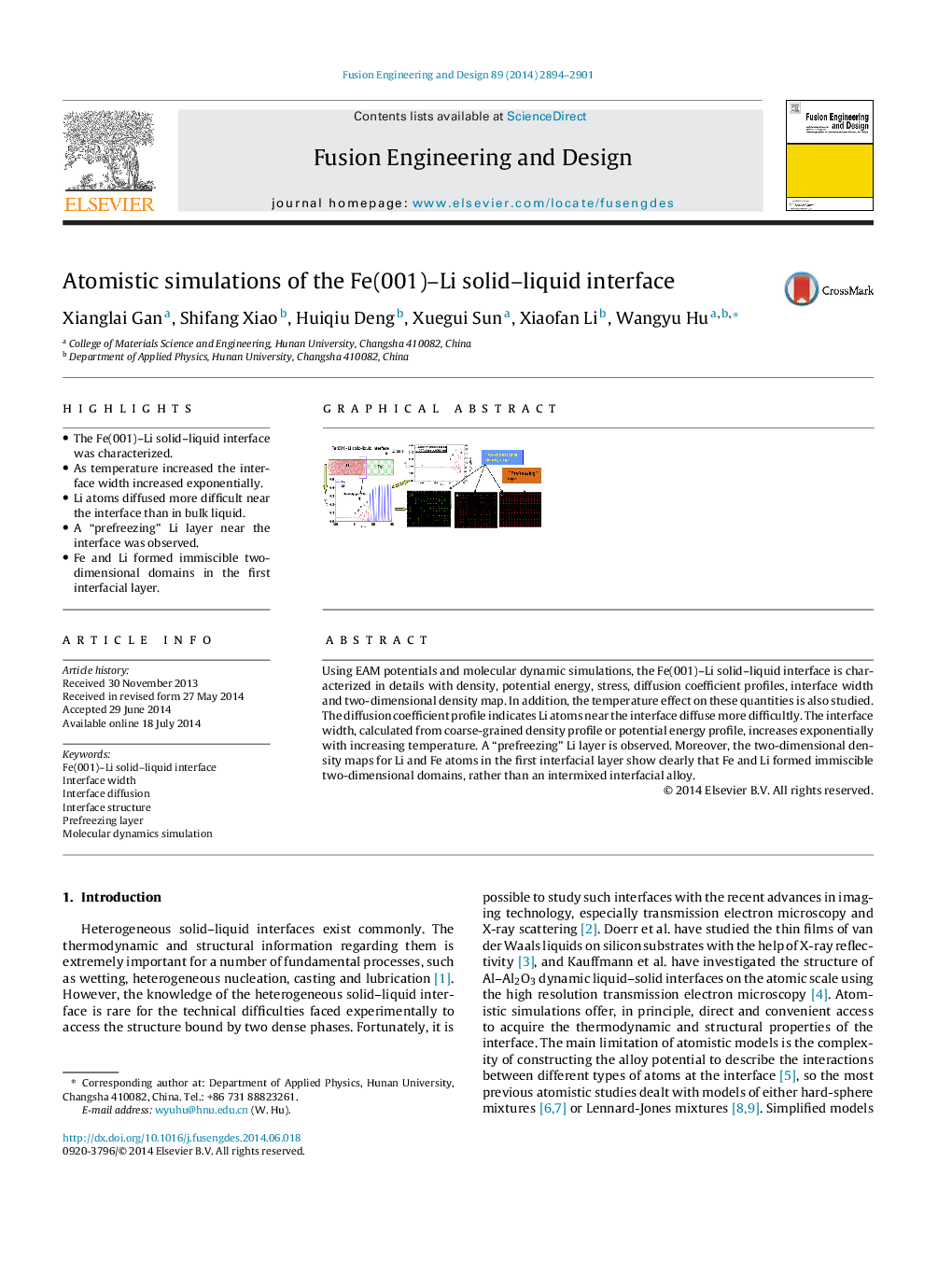| Article ID | Journal | Published Year | Pages | File Type |
|---|---|---|---|---|
| 271082 | Fusion Engineering and Design | 2014 | 8 Pages |
•The Fe(001)–Li solid–liquid interface was characterized.•As temperature increased the interface width increased exponentially.•Li atoms diffused more difficult near the interface than in bulk liquid.•A “prefreezing” Li layer near the interface was observed.•Fe and Li formed immiscible two-dimensional domains in the first interfacial layer.
Using EAM potentials and molecular dynamic simulations, the Fe(001)–Li solid–liquid interface is characterized in details with density, potential energy, stress, diffusion coefficient profiles, interface width and two-dimensional density map. In addition, the temperature effect on these quantities is also studied. The diffusion coefficient profile indicates Li atoms near the interface diffuse more difficultly. The interface width, calculated from coarse-grained density profile or potential energy profile, increases exponentially with increasing temperature. A “prefreezing” Li layer is observed. Moreover, the two-dimensional density maps for Li and Fe atoms in the first interfacial layer show clearly that Fe and Li formed immiscible two-dimensional domains, rather than an intermixed interfacial alloy.
Graphical abstractFigure optionsDownload full-size imageDownload as PowerPoint slide
